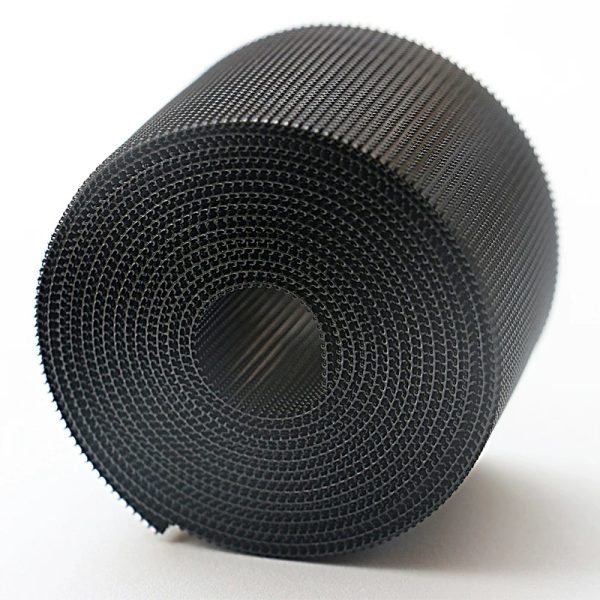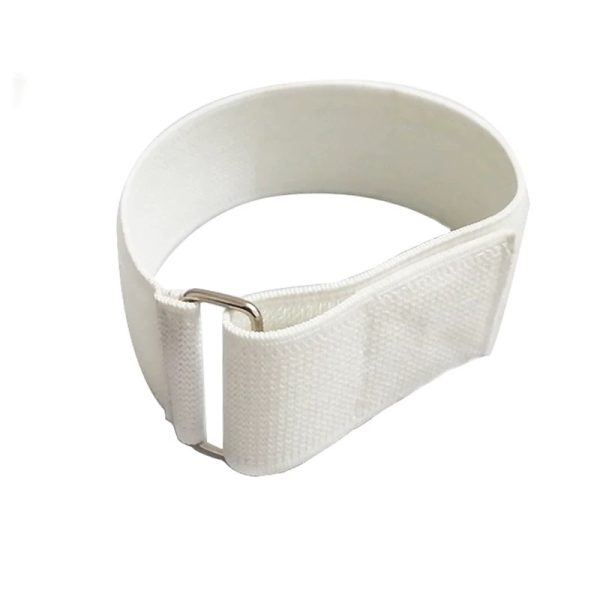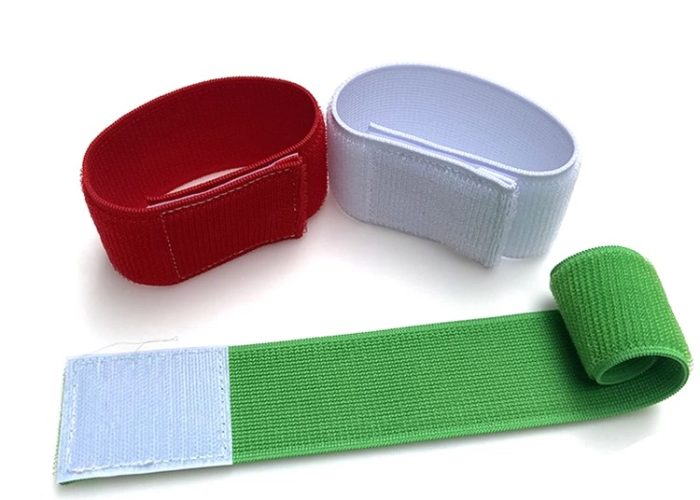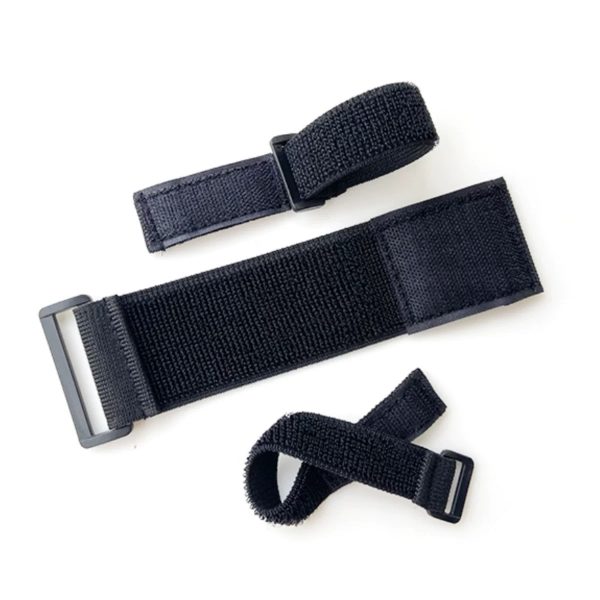Marine environments present exceptional challenges for hook-and-loop fasteners, with saltwater, UV radiation, and temperature fluctuations dramatically reducing standard Velcro lifespan. As custom webbing manufacturers specializing in marine-grade applications, we provide manufacturing techniques that transform ordinary fasteners into durable components that withstand these punishing conditions.
Advanced manufacturing techniques including high-performance material selection, reinforced construction, specialized edge treatments, and protective coatings can improve marine Velcro strap durability by 300-500% compared to standard options. These solutions deliver 3-5 times longer service life with 40-60% improved edge resistance and 70-85% reduced water absorption, maintaining functionality despite harsh marine exposure.
Discover techniques to extend marine Velcro lifespan, choose the right materials, and design cost-effective, high-performance fastening solutions.


Webbing manufacturing expert with 15+ years of experience helping product developers build high-performance straps for industrial, medical, and outdoor use.
High-performance material selection, reinforced base and edge construction, specialized coatings, and antimicrobial treatments are the most effective manufacturing techniques to improve marine-grade Velcro strap durability. These techniques combine to create marine Velcro with 3-5 times longer service life than standard options, with reinforced edges showing 40-60% improved resistance to fraying when exposed to harsh marine environments.
Key durability-enhancing techniques:
Material selection is the foundation of durable marine Velcro. High-tenacity polyester and nylon with inherent water resistance and UV stabilizers maintain hook and loop integrity even after prolonged saltwater exposure. For constantly submerged applications, polyester-based materials offer superior performance, while applications with intermittent exposure may benefit from the flexibility of treated nylon variants.
Reinforced construction techniques provide critical structural advantages. Double-layered backing (30-50% thicker than standard) distributes loads more effectively and prevents delamination. Edge reinforcement through specialized weaving and heat-setting reduces fraying by up to 60%, particularly important for applications with frequent attachment/detachment cycles.
Protective treatments and coatings create multiple environmental barriers. Ultrasonic edge sealing creates molecularly bonded edges that resist fraying, while hydrophobic coatings prevent moisture absorption. These treatments are more cost-effective for large production runs, while specialized fluoropolymer coatings may add premium costs justified for extreme exposure applications.
High-performance materials enhance marine Velcro longevity by providing 200-300% greater UV resistance, 40-60% improved salt corrosion resistance, and maintaining 85-90% of original strength after prolonged exposure. These specialized materials incorporate molecular-level modifications that resist degradation from saltwater, prevent UV-induced brittleness, and maintain hook-and-loop engagement even in challenging marine environments.
Key material performance factors:
Material selection directly impacts marine application performance. UV-stabilized polymers prevent the photodegradation that typically weakens standard hook-and-loop fasteners. These materials maintain flexibility and prevent the brittleness that leads to hook breakage, particularly critical for exterior marine applications exposed to constant sunlight.
Hydrophobic fiber treatments significantly reduce moisture-related failures. By reducing water absorption by 70-80%, these materials maintain consistent performance in wet environments. For applications requiring frequent submersion, polymer blends with enhanced moisture barriers provide superior performance compared to basic treated materials, though at a modest cost premium.
Salt-resistant formulations combat the highly corrosive marine environment. Advanced polymers specifically engineered for saltwater exposure maintain structural integrity and prevent the crystallization damage that degrades standard materials. This resistance to salt-induced degradation is particularly valuable for applications near waterlines or in splash zones.

Ultrasonic edge sealing, precision heat-cutting, hydrophobic coatings, and corrosion-resistant treatments protect marine Velcro in harsh environments by creating impermeable barriers that prevent water infiltration and edge degradation. These specialized edge treatments can extend product lifespan by 40-75% in marine applications, with ultrasonic-sealed edges showing 60% greater resistance to fraying compared to untreated alternatives.
Key protective treatments:
Edge degradation is the primary failure point in marine hook-and-loop applications. Ultrasonic edge sealing creates molecularly bonded perimeters that resist water infiltration and prevent the progressive unraveling that typically begins at edges. This technique is particularly cost-effective for high-volume production, adding only 5-10% to manufacturing costs while significantly extending product life.
Precision cutting technologies create clean, sealed edges from the start. Laser and ultrasonic cutting methods produce microscopically sealed perimeters that resist initial fraying, unlike mechanical cutting that can create potential failure points. While adding moderate production costs, these techniques provide exceptional value for applications requiring frequent attachment/detachment cycles in marine environments.
Specialized coatings create multiple layers of environmental protection. Hydrophobic treatments prevent moisture absorption that leads to mildew and delamination. Corrosion-resistant coatings shield base materials from saltwater damage. For extreme exposure applications, advanced fluoropolymer coatings maintain flexibility while providing superior protection, though they represent the highest-cost protection option.
Antimicrobial and specialized treatments are important for marine applications because they prevent biofouling, inhibit mildew growth by 85-95%, and maintain hook-and-loop functionality in biologically active environments. These treatments extend product lifespan by 30-50% in warm marine environments by preventing the biological breakdown that can degrade hook-and-loop mechanisms and compromise structural integrity.
Key antimicrobial benefits:
Biofouling represents a significant challenge in marine environments. Antimicrobial treatments using silver ion technology create an inhospitable surface for microorganisms, preventing the biological films that can interfere with hook-and-loop engagement. This protection is particularly valuable in tropical or warm-water applications where biological activity accelerates material degradation.
Mildew prevention maintains both functionality and appearance. Zinc pyrithione and other antimicrobial additives prevent the unsightly and potentially harmful mildew growth that commonly affects marine textiles. These treatments maintain aesthetic appeal while preserving structural integrity, particularly important for consumer-facing marine applications.
Application-specific treatments address unique marine challenges. Specialized formulations can be tailored to specific usage environments, with different antimicrobial packages optimized for freshwater, brackish, or saltwater applications. While adding approximately 15-20% to material costs, these treatments provide exceptional value by dramatically reducing maintenance requirements and extending product life.

Accelerated weathering, salt spray testing, dimensional stability analysis, and load cycle testing are the key methods that ensure quality and performance in marine Velcro straps. These rigorous testing protocols simulate years of environmental exposure in weeks, with premium marine-grade products withstanding 2,000+ hours of accelerated testing while maintaining 85-90% of original performance specifications.
Key testing methodologies:
Accelerated weathering validates long-term durability. Quality marine Velcro undergoes 2,000+ hours of xenon arc or UV chamber testing, simulating years of exposure while monitoring strength retention, color stability, and material integrity. Premium products maintain 85-90% of original specifications after this intensive testing, providing quantifiable performance assurance.
Salt spray testing replicates marine corrosion environments. Exposure to continuous salt mist in controlled chambers reveals how materials will perform after years of saltwater exposure. Testing protocols requiring 1,000+ hours of exposure without significant degradation ensure products can withstand the highly corrosive marine environment throughout their service life.
Load cycle testing evaluates real-world performance. By subjecting fasteners to 5,000-10,000 attachment/detachment cycles while monitoring tensile strength retention, manufacturers can predict long-term durability in applications requiring frequent adjustment. Premium marine Velcro maintains at least 80% of original performance after intensive cycle testing.
Saltwater and chemical exposure affect marine-grade Velcro design by requiring corrosion-resistant polymers, specialized hook geometries, and chemical-resistant backing materials that maintain 80-90% of functionality after extended exposure. Properly designed marine Velcro incorporates these elements to withstand the highly corrosive combination of salt, UV, and common marine chemicals like fuel, cleaning agents, and anti-fouling compounds.
Key design considerations:
Salt crystallization represents a primary failure mechanism. Marine-grade Velcro requires modified hook geometries and material compositions that resist the mechanical interference caused by salt crystal formation. These specialized designs maintain engagement even when exposed to repeated salt spray and drying cycles, critical for above-waterline applications.
Chemical resistance protects against common marine contaminants. Marine environments expose fasteners to fuels, cleaning agents, and maintenance chemicals. High-performance marine Velcro incorporates chemical-resistant backing materials and encapsulated hook structures that withstand these exposures without degradation, maintaining 80-90% functionality even after extended contact with marine chemicals.
Salt and chemical synergies accelerate degradation. The combination of saltwater and petroleum products or cleaning agents creates particularly challenging conditions. Premium marine Velcro designs account for these synergistic effects through multi-layer protection strategies, preventing the accelerated breakdown that occurs when multiple environmental stressors combine.

Temperature fluctuations, UV radiation intensity, biological exposure, and mechanical stress patterns are the critical environmental factors that must be considered when selecting marine Velcro. These factors work synergistically in marine environments, requiring hook-and-loop fasteners that can maintain 75-85% of performance despite exposure to temperature ranges from -30°C to +60°C, tropical UV intensity, and biological contaminants.
Key environmental considerations:
Temperature fluctuations impact material flexibility and strength. Marine environments can experience extreme temperature variations that stress standard fasteners beyond their design parameters. Purpose-engineered marine Velcro maintains consistent performance across -30°C to +60°C ranges, with specialized polymer compositions that resist brittleness in cold and softening in heat.
UV radiation intensity varies significantly by application location. Equatorial applications face UV exposure 5-10 times stronger than polar regions, accelerating degradation of inadequately protected materials. Geographic-specific selection criteria should prioritize advanced UV stabilizers for tropical applications, while cost efficiencies may be possible in less demanding UV environments.
Biological exposure varies with water temperature and nutrient levels. Tropical and subtropical marine environments present significantly higher biological fouling challenges than colder waters. Applications in warm waters require comprehensive antimicrobial protection, while those in colder regions may achieve adequate performance with more basic treatments, potentially offering 10-15% cost savings.
Appropriate sizing safety factors, strategic orientation relative to stress lines, hybrid attachment systems, and environmental exposure minimization are the key design best practices that maximize marine Velcro performance and cost-effectiveness. These engineering-driven approaches can improve service life by 40-70% while optimizing material costs, creating marine solutions that balance performance requirements with budget considerations.
Key design best practices:
Appropriate sizing with safety factors ensures reliable performance. Marine applications require 1.5-2.0× more fastening area than calculated minimum requirements to account for environmental degradation over time. This safety factor approach maintains secure closure throughout the product lifecycle while adding only 10-15% to material costs compared to inadequately sized alternatives.
Strategic orientation relative to stress lines dramatically improves durability. Aligning hook-and-loop fasteners parallel to primary stress directions reduces shear forces that can cause progressive failure. This simple design consideration can improve service life by 30-50% with zero additional material cost, making it one of the most cost-effective optimization strategies.
Hybrid attachment systems combine performance advantages while controlling costs. Integrating hook-and-loop fasteners with mechanical anchors at high-stress points creates systems that maintain adjustability while providing mechanical insurance against complete failure. This approach typically adds only 5-10% to component costs while improving reliability by 40-60% in demanding applications.
Cost-optimization strategies balance performance with budget requirements. Selective use of premium materials in high-exposure areas combined with standard materials in protected locations can reduce overall costs by 15-30% while maintaining 90-95% of all-premium performance. This targeted approach delivers exceptional value for budget-conscious marine applications without compromising critical performance parameters.
Marine-grade Velcro requires specialized manufacturing techniques to withstand harsh saltwater environments. By implementing high-performance materials, reinforced construction, and protective treatments, product durability increases by 300-500%. Contact us to explore custom manufacturing solutions tailored to your specific marine product requirements and environmental challenges.
Marine-grade Velcro must comply with ASTM D5169 for fastener strength, ASTM G154 for UV resistance, and ISO 12947 for abrasion resistance. Products used in safety applications may also require certification to ANSI/ISEA 107-2020 standards, while those used on vessels often need compliance with ABYC (American Boat and Yacht Council) guidelines for marine hardware components.
Customization options include variable hook density patterns, material thickness adjustments (0.5-2.0mm), specialized antimicrobial packages, and application-specific coatings. We can engineer custom solutions optimized for tropical waters, arctic conditions, or specialized chemical exposure profiles, with minimum order quantities starting at 500 linear meters for fully customized specifications.
Marine-grade Velcro typically costs 30-60% more than standard hook-and-loop fasteners, with premiums directly correlating to performance requirements. Basic marine-grade options start at approximately 30% above standard pricing, while premium solutions with comprehensive protection packages may command 50-60% premiums. However, lifecycle cost analysis typically shows 40-60% savings when factoring replacement frequency.
Marine-grade Velcro typically maintains full functionality for 3-5 years in continuous saltwater exposure and up to 7-8 years with intermittent exposure. Lifespan depends on specific environmental conditions, with tropical exposures reducing service life by 20-30% compared to temperate applications. Proper design implementation and occasional freshwater rinsing can extend performance by an additional 25-40%.
Marine-grade Velcro outperforms standard hook-and-loop by 300-500% in saltwater environments, maintaining 85% of original strength after 1,000+ hours of accelerated testing. Standard Velcro typically loses 50-70% of strength capacity within 200-300 hours of equivalent exposure, making marine-grade options significantly more economical for long-term applications despite higher initial costs.
Critical safety considerations include applying appropriate 1.5-2.0× sizing safety factors, implementing backup mechanical fastening for life-critical applications, and establishing regular inspection protocols. Marine Velcro should never be the sole attachment method for safety-critical applications without redundant systems. Additionally, UV-degradation monitoring is essential as it can occur without visible indicators while significantly reducing holding strength.